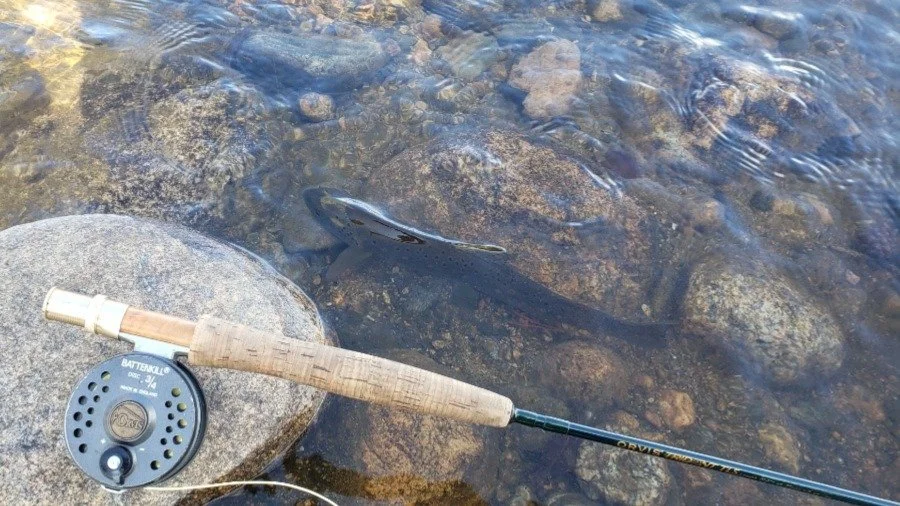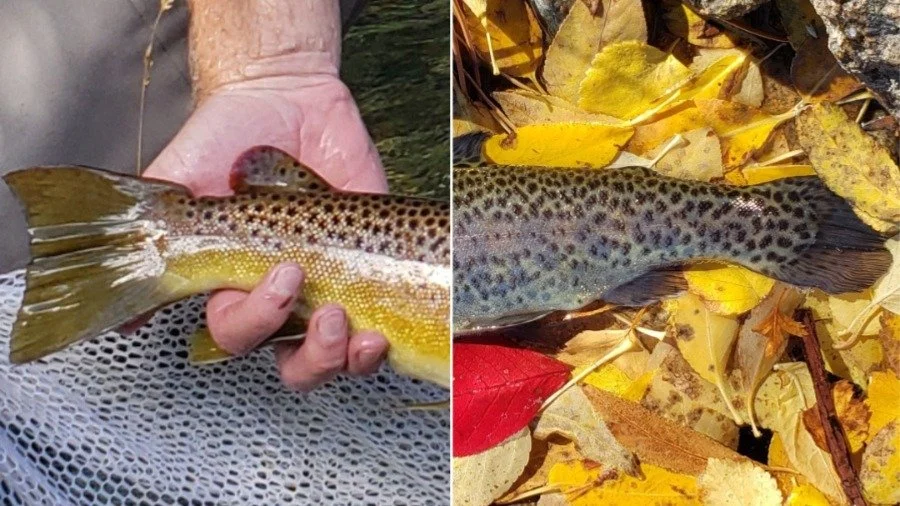Fishy Friday: how to distinguish wild vs stocked trout
A trout rests in slower current on the lower Fall river just after being released by the author.
All photos by Evan Jones
Spring is right around the corner, which means fishing season is about to kick off here in the Estes Valley. Soon our rivers and lakes will be bustling with anglers, some of whom will be practicing catch-and-release, while others will be seeking to bring a few trout home for dinner. If you’re among the thousands of anglers who plan to keep some trout this year, it’s important that you’re able to distinguish between different types of trout in order to ensure that you’re minimizing your potential impact on vulnerable populations.
One of the key distinctions to notice about the trout you catch is whether they are artificially stocked or wild-born. Stocked trout are intended to be harvested, while wild fish should ideally be released unharmed so they have more opportunities to reproduce. You are most likely to find stocked trout in Lake Estes, Mary’s Lake, and in the Big Thompson and Fall River through town, while wild trout are more likely to be found at higher elevations outside of town.
On the left is a wild brown trout with an unusually large adipose fin (in the palm of his hand); and on the right is a stocked rainbow trout whose adipose fin has been removed. Note how the stocker’s tail is also smaller and more rounded.
Fortunately, it’s easy to tell if a trout you’ve caught is stocked or wild. All you need to do is check the adipose fin, located along the fish’s back between its dorsal fin and tail (see photos above). Stocked fish have their adipose fins removed before they are released into our waters–and they never grow back–so if this fin is missing, you are guaranteed to be holding a stocked fish. If the adipose fin is present, you are almost certainly holding a wild trout that should be returned to the water immediately. If more anglers would limit their harvesting only to stocked trout, our wild populations would have more opportunity to thrive, which would result in healthier and more resilient fisheries for everyone.


